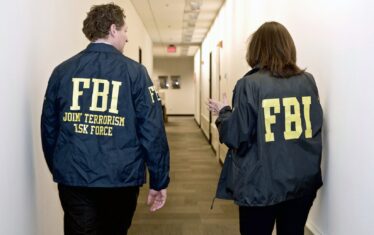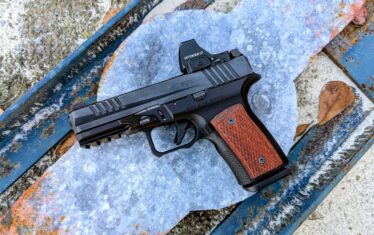Is your fitness and firearms training two separate training events? It does not have to be. Some things need to be in place, but incorporating these two critical tasks is important to your overall self-defense training program.
The Fitness & Firearms Inception
The fitness and dry fire firearms concept came about by accident while training in the War HOGG Tactical combat training facility. After retiring from the US Army after 29 years, I still wanted to maintain my physical fitness. I quickly realized that driving to and from the gym each day was costing me valuable time that I could be putting into my business or other aspects of my life.

Time is your most precious commodity. It’s the one thing that can’t be bought, and once it’s gone it’s gone. As the saying goes, “You can’t stop the hands of time.” I decided to build my own gym to save time and ensure I always had a place to train — no excuses. This became especially crucial during the 2020 shutdown.
I started with a few items, like Brute Force sandbags and water cans that we use during our firearms training courses to add physical duress during competitions. I was on the lookout for other equipment, such as a rack, bumper weights, an Olympic bar, kettlebells, a heavy bag, and a Century BOB.
It was a slow process, scouring local sales ads to find what I needed, but I eventually put together the setup I was aiming for.
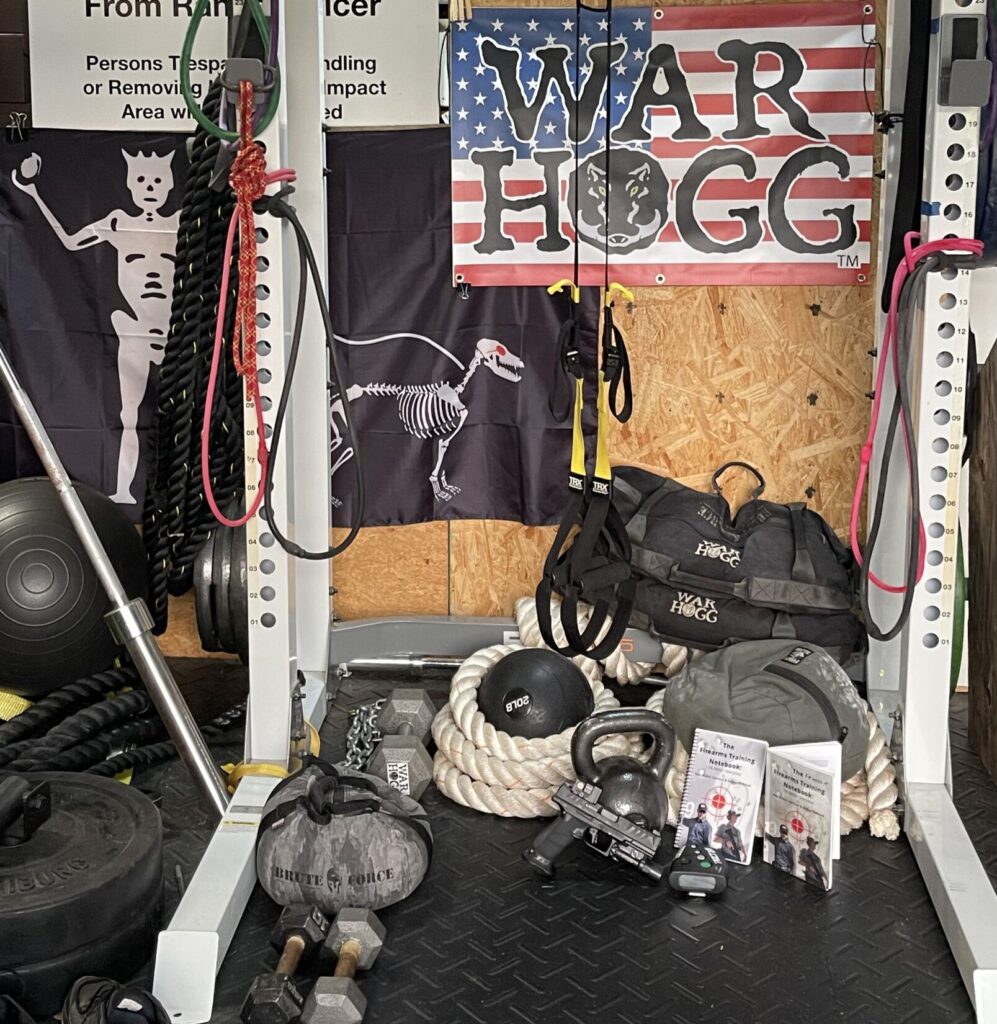
I used to do physical workouts on the live fire range but never thought to incorporate dry fire training into my regular workout sessions.
One day, while working out, I noticed my gun belt, PACT timer, and copy of The Firearms Training Notebook nearby. At that point I had the epiphany — why not incorporate dry fire training between workout sets?
That moment sparked what I now call Fitness & Firearms. I even covered this topic on the On The Range Podcast War HOGG Words of Wisdom because I believe in it so much.
Fitness & Firearms is now a part of my daily routine, and I wish I had started it sooner. There’s something powerful about dry fire training when your muscles are fatigued, sweat is dripping, and you’re breathing heavily. I’ve noticed that my performance improves during dry fire sessions without muscle fatigue, and this improvement carries over to the live fire range.
The Firearms Training Notebook
I have two versions of The Firearms Training Notebook: a regular edition and a limited edition spiral-bound version. I use the regular notebook for Fitness & Firearms, while the spiral-bound one is reserved for live fire training.
The spiral binding allows the notebook to lay flat, which is crucial during live fire sessions. The regular notebook, on the other hand, needs to be held open with a clipboard or rubber band, and while you can make it stay open without aids, wind on the range can easily turn the pages. This can be a distraction when you’re trying to record data or notes. The spiral-bound version minimizes these issues, making it more practical for live fire training.
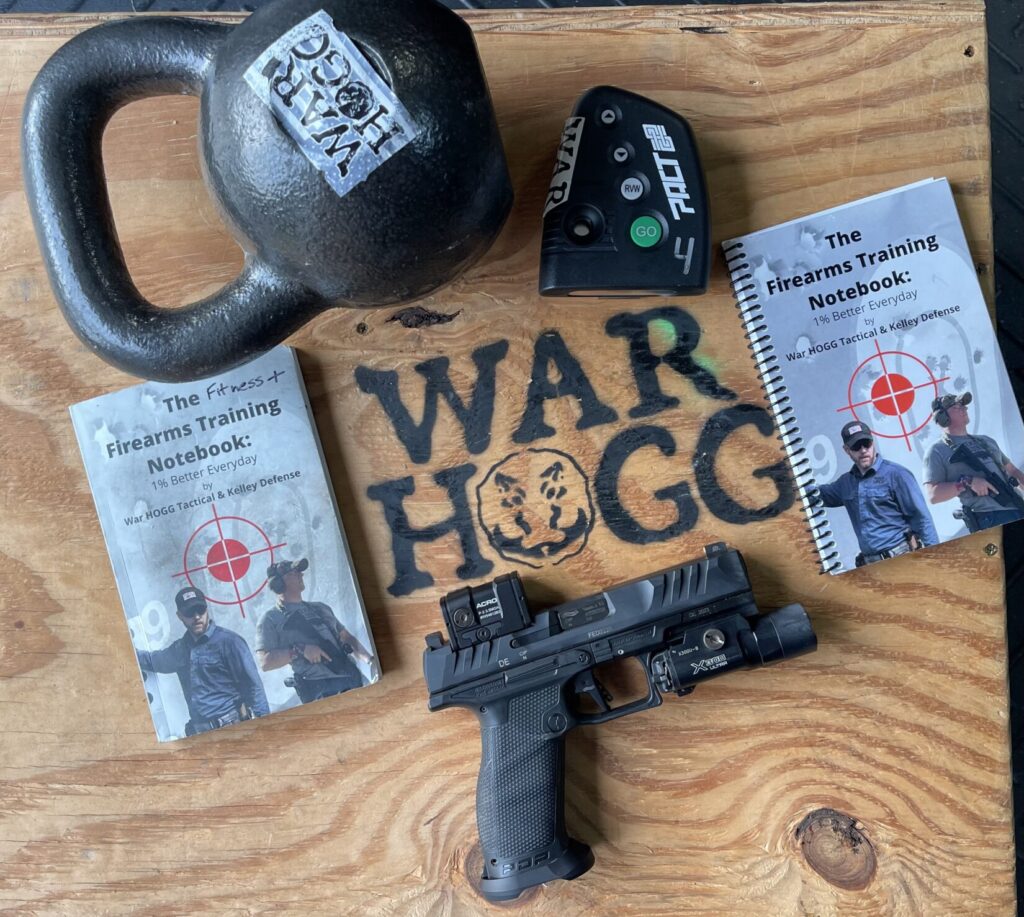
How to Execute Firearms & Fitness
A word of caution: I always ensure that no one can see me conducting my dry fire training. The last thing I want is to alarm anyone into calling the police about someone pointing a pistol or rifle around. While I do some exercises outside, I keep all dry fire activities indoors. It’s essential to be mindful of your surroundings and understand what you can and can’t do with your firearms.
Here’s how I structure my Fitness & Firearms training:
I pre-plan my workout and dry fire session and record everything in my Fitness & Firearms Training Notebook. I start with some cardio, like running, jumping rope, or rowing on a Concept II rower. Then I move on to exercises, which might include sandbag work, pull-ups, TRX push-ups, squats, heavy bag training, hitting the Century BOB, and core-focused activities. After each exercise set, I put on my gun belt and begin my dry fire training. Once the dry fire session is complete, I return to my exercises and repeat the process until both my workout and dry fire training are finished.
Currently, I’m focusing on functional fitness exercises and practicing my draw from a Level 3 Retention Holster.
On The Range Workout
If your live fire range allows it, I highly recommend incorporating physical duress into your marksmanship program, especially if you’re in the military or law enforcement.
At War HOGG Tactical, we always include some form of physical duress, or “stress shoot,” in our law enforcement training events. Brute Force and GORUCK sandbags are our go-to tools for increasing heart rate, breathing, and muscle fatigue, much like the stress shoots I conducted during my military service. Your only limitations are the tools and range available — let your imagination run wild. For example, you might drag a Mr. Heavy, apply a tourniquet, and then run a course of fire.
In our law enforcement courses, we run two iterations of Fitness & Firearms, which involve three exercises and shooting a pistol freestyle, strong hand only, and support hand only. Each shooter has three magazines with five rounds each. The exercises vary depending on the range surface and distance. Typically, the first exercise involves bear-hugging a sandbag down to the firing line, followed by three War HOGG burpees.
Unlike regular burpees, War HOGG burpees involve lifting the sandbag overhead and dropping it. Afterward, the shooter loads their pistol, fires five shots freestyle (using two hands), reloads, holsters, secures the sandbag, and brings it back to the start/finish line.
The second exercise involves carrying the sandbag in the strong hand, three War HOGG burpees, and firing five rounds strong hand only. Their time stops once they cross the start/finish line with their sandbag, which they can carry back any way they choose.
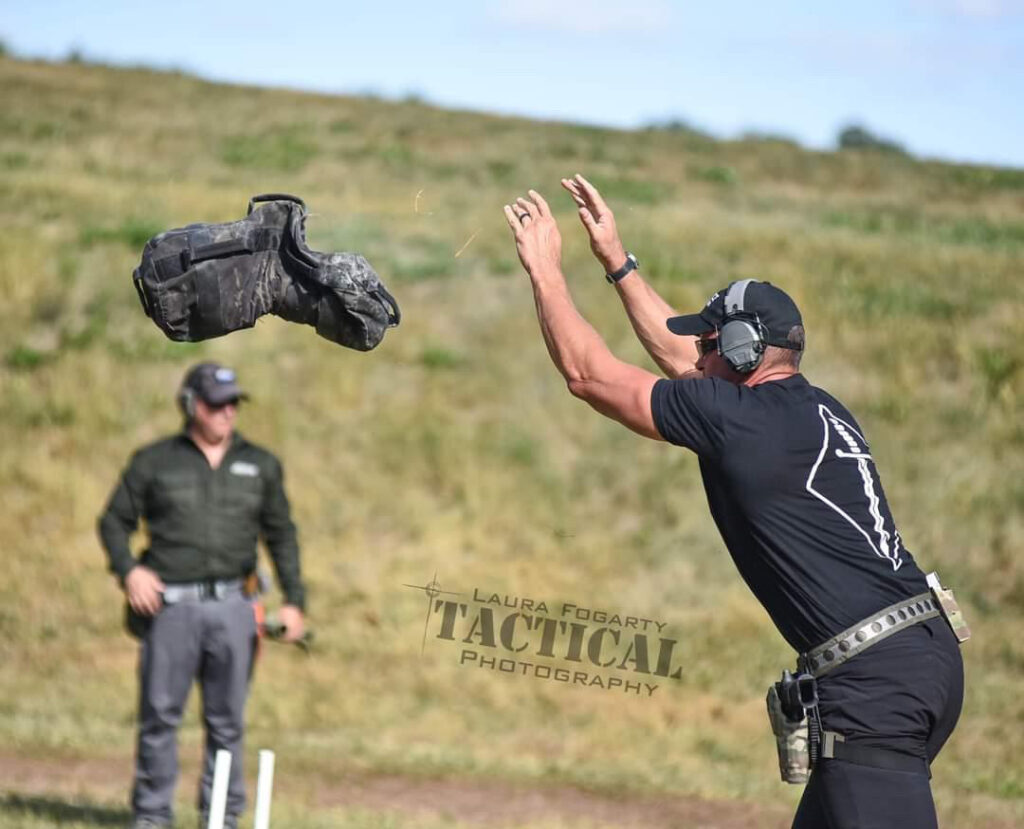
The second iteration includes lateral throws, forward throws, and bear crawls, all using the sandbag. There are no War HOGG burpees in this round, and again, the timer stops once the shooter crosses the start/finish line with their sandbag.
The exercises cover a distance of about 35 meters, with the C-zone steel target positioned 15 meters away. I assign graders—usually other students—at each shooter’s position. While they can assist if a shooter forgets the sequence of events, their primary role is to record the number of misses. Each miss adds 10 seconds to the shooter’s overall time.
It pays to be a winner! Thanks to support from our fantastic industry partners, we award prizes to the top shooters. Prizes range from Oakley SI sunglasses and Safariland holsters to PACT timers, Spyderco knives, Salomon shoes, Propper range bags, and more.
k9 handler application
During our one-handed pistol shooting drills for K9 officers, we use a sandbag in the officer’s support hand to simulate holding their K9. I use the sandbag as a tool to bridge the gap before the officers bring their K9 on the range. We have also used other items like BAMF Hammers, ammo cans, and kettlebells to to demonstrate how officers can incorporate equipment they already have in their department to enhance their strong-hand pistol shooting training.

Conclusion
If you can combine fitness with your live and dry fire training, I highly recommend it. While it might take more time, the benefits are definitely worth it—I’ve seen them firsthand. For law enforcement officers, this is essential. Your world is highly dynamic, and I’ve had students tell me that training to shoot under physical duress during our course was a key factor in their survival during a deadly force encounter.
Train hard, stay safe, and see you on the range.
– Rick








